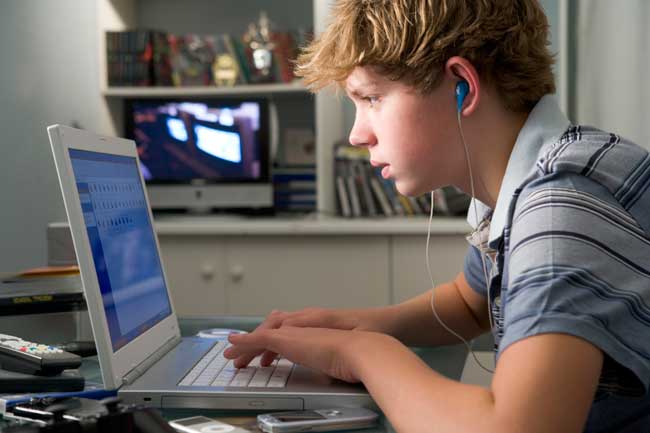The majority of American parents today are largely unconcerned about their young children’s media use, according to a Northwestern University study. It also finds that parents adopt vastly different parenting styles related to media, and those styles are driving force behind their children’s screen time.
Based on nationally representative survey of more than 2,300 parents of children aged 0 to 8, the study “reveals a generational shift in parental attitudes about technology’s role in young children’s lives,” says Ellen Wartella, director of Northwestern’s Center on Media and Human Development and lead author of the report.
The study, “Parenting in the Age of Digital Technology,” challenges two key assumptions about media and parenting: first, that smartphones and tablets have come today’s “go-to” parenting tools and, second, that dominant pattern in most families is children driving the desire for screen time while parents pull on the reins.
“Today’s parents grew up with technology as a central part of their lives, so they think about it differently than earlier generations of parents,” says Wartella, the Hamad Bin Khalifa Al-Thani Professor in Communication in Northwestern’s School of Communication. “Instead of a battle with kids on one side and parents on the other, the use of media and technology has become a family affair.”
Researchers identified three different types of media environments parents create, which they call “media-centric,” “media- moderate” and “media-light.” Children in media-centric families spend three hours more each day with screen media (TV, computers, video games and mobile media, including smartphones and tablets) than those in media-light homes.
The study is being released at a June 4 conference on “Parenting in the Age of Digital Technology: How Families Use Media and Technology in Their Daily Lives,” at the Pew Charitable Trusts Conference Center, in Washington, D.C.
Among the findings of the report:
- An overwhelming majority (78 percent) of parents say their children’s media use is not a source of family conflict; 59 percent say they are not worried about their children becoming addicted to new media; and 55 percent say they are “not too” or “not at all” concerned about their children’s media use (compared to 30 percent who are concerned).
- Despite the widespread use of mobile media, the vast majority (70 percent) of parents say smartphones and tablets do not make parenting any easier; 29 percent claim they do.
- Parents say they are most likely to turn to toys or activities (88 percent), books (79 percent), or TV (78 percent) when trying to keep their children occupied. Of those with smartphones or iPads, 37 percent say they are very or somewhat likely to turn to those devices.
- Even when trying to calm an upset child, parents say they are still more likely to turn to a toy or activity (65 percent) or to a book (58 percent) than to media; of those who have them, only 17 percent say the same about letting the child play with a mobile device like a smartphone or tablet.
- With the exception of video games, parents think more positively than negatively about the impact of media (including TV, computers and mobile devices) on children’s reading and math skills, and their creativity.
- Parents’ most consistent concern about new and old media alike is their negative impact on children’s physical activity. Sixty-one percent of parents say video games have mainly a negative effect on their children’s physical activity, and similar proportions say the same about TV (58 percent), computers (57 percent) and mobile devices (54 percent).
- Parents view video games more negatively than TV, computers or mobile devices. Parents rated video games as more likely to have a negative effect on children’s academic skills, attention span, creativity, social skills, behavior and sleep than any other medium.
The three different types of family media environments identified by the researchers are:
- Media-centric, 39 percent of families. Parents in media-centric households consume an average of 11 hours of screen media a day. Eight in ten (81 percent) say they are “very” or “somewhat” likely to use TV to keep their child occupied when they need to get something done around the home. Half of these families (48 percent) leave the TV on in the home all or most of the time and nearly half (44 percent) have a TV in their child’s bedroom (compared to 26 percent of “media light” families). Children in media-centric families spend an average of more than 4.5 hours a day using screen media.
- Media-moderate, 45 percent of families. Parents in this group spend an average of just under five hours a day using screen media. While these families like TV, they are more likely to enjoy doing things together outside (56 percent compared to 46 percent among media-centric families). Children in media-moderate families spend just under three hours a day (2:51) with screen media.
- Media-light, 16 percent of families. These parents average less than two hours a day (1:48) with media. These families are less likely to enjoy watching TV or movies together “a lot” as a family activity (32 percent, compared to 53 percent of media-centric parents) and less likely to use TV when they are getting their child ready for bed (24 percent, compared to 42 percent among media-centric parents). Children in media light families spend about an hour and a half (1:35) with
Source Northwestern University










